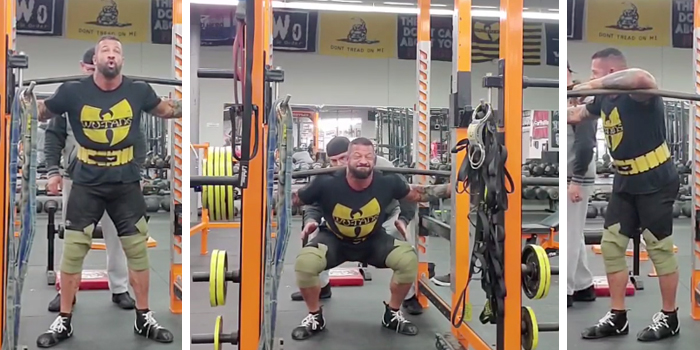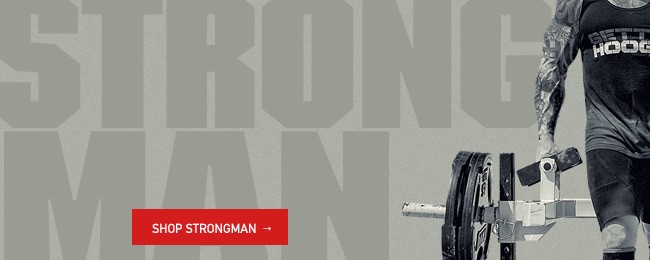
There’s no doubt that strongman is a brutal sport to train for. The odd objects lifted and the uncertainty of the weights being lifted all increase the risk of injury. Often in competition, we don't know how heavy something is until we actually get there to compete. The car deadlift is a perfect example of this. It will just say “heavy” on the entry form. We have no idea what to expect compared to a barbell deadlift where we can train with the intention of moving that exact weight. You have to be prepared for anything, making it a very difficult sport to train for.
Having competed in powerlifting and CrossFit, I can easily say strongman is the most challenging to stay healthy for. Compared to other strength sports, it's no surprise that strongman has the highest injury rate. I also attribute this to how shows are run sometimes. For those of you that have competed a few times, you know all too well that we usually have very little warm-up time. Sometimes we'll have to wait over an hour from one event to another.
RECENT: 5 Exercises to Never Take Out of Your Program
To train for strongman, you need to have all variables on point. This means smart programming, adequate sleep, and proper nutrition. With that being said, there is one common injury I see in strongman that can be prevented: knee pain. Patellar tendinitis or “achy” knees constantly cause problems for competitors. As someone who has dealt with knee issues through a good part of my strongman career, here are some things that drastically helped me train harder with less pain.
Get Out of Squat Shoes
For strongman, the front squat is king. It applies to the log press, stone loads, and loading any odd object in the sport. It is very common to perform front squats and even back squats in elevated heeled shoes. I understand that many people use elevated heeled shoes to stay more upright in the squat and to reach depth easier; however, touching your butt to the floor during the squat does not matter in strongman. The squat is only an accessory lift to improve your events. There is no need to be obsessed with depth while training. Now I am certainly not saying to squat high because you’re are a strongman. I think everyone should be able to get to parallel to get everything you need out of the lift. As discussed above, the sport already puts a lot of stress on the knees, so wearing squat shoes will only increase that. It is better to emphasize the hips for squats, so make sure you are squatting in flats. Also, as a side note on squats, the box squat performed correctly is a great way to give your knees a break if they are aggravated from training.
Use a Light Pair of Knee Wraps
Knee wraps don’t just help you lift more weight; they also take more stress off the knees, which we want in a sport that already stresses the joints. Squats are the obvious choice to wear knee wraps, but I only recommend wearing a light pair for your top sets. The Normal Knee Wrap is a perfect choice to use for strongman. You don’t need to crank them for a max squat, but make them tight enough to get a pop out of the bottom, and light enough to do sets of eight without losing feeling in your feet. Also, you should be able to wrap your own knees for this, so stop bugging your training partners. You can also wear a light pair of knee wraps when you are pressing. Getting proper leg drive is the biggest culprit for causing knee pain, mainly due to poor technique, which we will get to next.
Get Your Technique Right
Using your hips improperly to press causes the most amount of knee pain in my experience. A common mistake is when the weight is racked on the shoulders. The lifter leans back too much and causes the knees to push forward, putting all the stress right on the patellar tendon. This is a great way to get tendinitis that will be very difficult to rest while maintaining strongman training. I dealt with this for years and got to the point where I could barely bend my knees because my technique was so bad. It wasn’t until I learned to properly use my hips that my knee pain went away. I was able to press more and generate more power from using both of my hips and knees. In the log clean and press tutorial video above, you can see the proper technique.










Thanks for this, I have been reading a lot of your articles over here. The rock back technique I don't see it mention in much places, also the part of using the hips, though I still struggle to get that and likely been using the wrong technique.
I am very new to strongman and after entering one and missing the log at 85kg (About 187lbs I think..? Never lifted a log before), I purchased a log to train with, after a year I was able to strict military press 100kg (225lbs) on it but I am extremely hit or miss with driving with my lower body and was only able to do around 105-110kg.
Sorry if this seems super obvious, but does the hip drive backward like a kettlebell swing hinge or its a shift downward and then quickly driving back up? Always struggled to get this right.
Thanks.